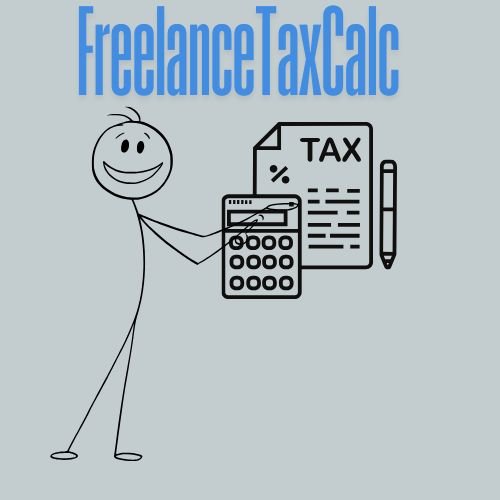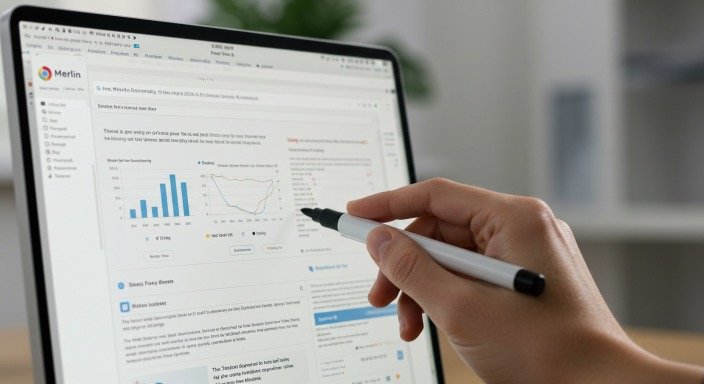How to file taxes if you’re a freelancer
Starting your freelance journey is exciting — but when tax season comes, confusion hits hard. Unlike traditional employees who get W‑2 forms and automatic withholdings, freelancers handle their own taxes.
If this is your first time filing freelance taxes, you’re not alone. In this guide, we’ll walk step-by-step through what you need to do, what forms you’ll use, how to pay quarterly taxes, and how to maximize deductions.
By the end, you’ll feel confident filing taxes as a freelancer — no more guessing.
Step 1: Understand Your Freelance Tax Obligations
As a freelancer, the IRS considers you self-employed. This means:
- You’re responsible for income tax on all your earnings
- You pay self-employment tax (Social Security + Medicare, 15.3%)
- You may need to pay quarterly estimated taxes
Try our Freelance Tax Calculator to estimate your taxes instantly.
IRS: Self-Employed Individuals Tax Center
Step 2: Gather Your Income Documents
Unlike employees, freelancers don’t receive a single W‑2. Instead, you may get:
- Form 1099-NEC from each client paying you $600+
- Form 1099-K from PayPal, Stripe, or Venmo (if $600+ processed)
- Records of all payments (even if under $600 — it’s still taxable)
Tip: Keep a digital folder for all 1099 forms and invoices.
Read: Freelance Tax Basics – What You Need to Know
Step 3: Track Business Expenses for Deductions
Deductions reduce your taxable income. Common freelancer write-offs include:
- Home office expenses
- Laptop, software, and apps
- Internet and phone bills
- Professional courses and certifications
- Travel, meals (business-related), and supplies
IRS: Deducting Business Expenses
Read more : Top 10 Freelance Tax Deductions You Need to Know in 2025
Step 4: Learn the Forms You’ll File
Freelancers usually file:
- Form 1040 – Your main tax return
- Schedule C (Profit or Loss from Business) – Report income and expenses
- Schedule SE – Calculate self-employment tax
- Form 1040-ES – For estimated quarterly payments
You may also need state-specific forms. Check your state’s tax website for details.
How to file taxes if you’re a freelancer
Step 5: Pay Quarterly Estimated Taxes
If you expect to owe $1,000+ in taxes for the year, the IRS requires you to pay quarterly estimated taxes:
| Quarter | Due Date |
| Q1 (Jan–Mar) | April 15 |
| Q2 (Apr–May) | June 15 |
| Q3 (Jun–Aug) | September 15 |
| Q4 (Sep–Dec) | January 15 (next year) |
Failing to pay can lead to penalties.
Here is Quarterly Tax Deadlines & How to File
How to file taxes if you’re a freelancer
Step 6: Consider Your Business Structure
If you’re just starting, you’re likely a sole proprietor by default. But as you grow, consider:
- LLC for liability protection
- S Corporation for tax savings (reasonable salary + distributions)
IRS: Business Structures Overview
Read our article Should You Pay Yourself a Salary as a Freelancer?
How to file taxes if you’re a freelancer
Step 7: Use Tools to Simplify Tax Filing
Tools make your life easier:
| Tool | Purpose |
| QuickBooks SE | Income & expense tracking |
| Wave Accounting | Free bookkeeping |
| FreshBooks | Invoicing + expense tracking |
| Gusto | Payroll (if you pay yourself a salary) |
Bonus: These tools’ subscriptions are deductible business expenses.
Step 8: Keep Personal & Business Finances Separate
Open a separate bank account for your freelance business. This makes it easier to:
- Track income and expenses
- Prepare for taxes
- Look more professional to clients
How to file taxes if you’re a freelancer
Step 9: File Your Taxes Electronically
Most freelancers file taxes online using software or a tax preparer. Options include:
- TurboTax Self-Employed
- H&R Block Self-Employed
- A local CPA specializing in freelancers
Electronic filing speeds up processing and refunds.
How to file taxes if you’re a freelancer
Step 10: Plan Ahead for Next Year
After your first year, taxes get easier. Make it a habit to:
- Save 25–30% of your income for taxes
- Track expenses monthly
- Review your income and adjust quarterly payments
- Keep up with IRS updates
Read our article : Freelance Brand Scaling – How to Grow Smart
Final Thoughts
Filing taxes as a first-time freelancer feels intimidating at first. But once you understand the forms, deadlines, and deductions, the process becomes manageable—and even empowering.
By planning ahead, using the right tools, and staying organized, you can minimize stress, reduce your tax bill, and focus on growing your freelance career.
Use this guide as your starting point, and remember: consistency is your best tax strategy.


